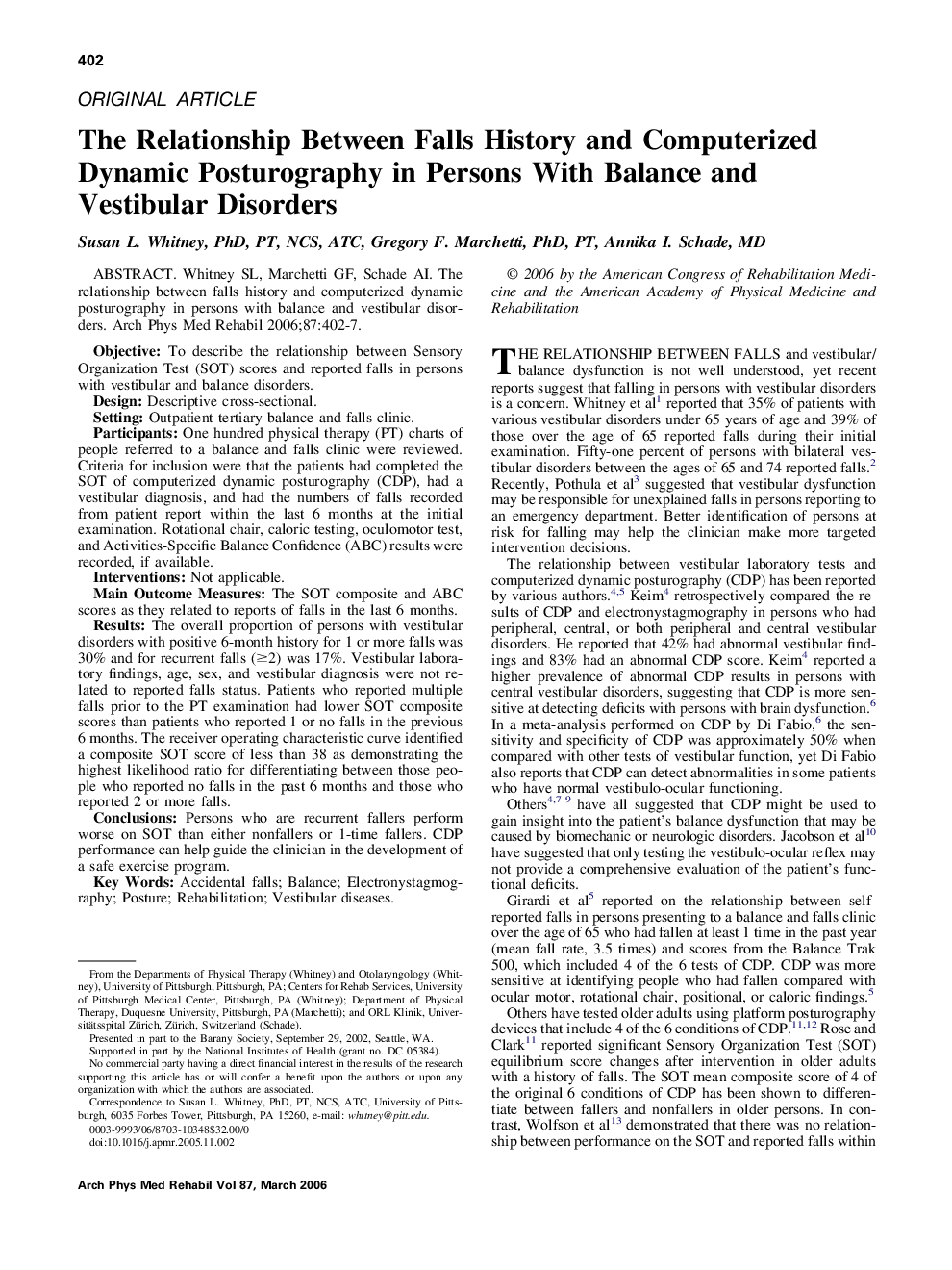| کد مقاله | کد نشریه | سال انتشار | مقاله انگلیسی | نسخه تمام متن |
|---|---|---|---|---|
| 3451902 | 1595809 | 2006 | 6 صفحه PDF | دانلود رایگان |

Whitney SL, Marchetti GF, Schade AI. The relationship between falls history and computerized dynamic posturography in persons with balance and vestibular disorders.ObjectiveTo describe the relationship between Sensory Organization Test (SOT) scores and reported falls in persons with vestibular and balance disorders.DesignDescriptive cross-sectional.SettingOutpatient tertiary balance and falls clinic.ParticipantsOne hundred physical therapy (PT) charts of people referred to a balance and falls clinic were reviewed. Criteria for inclusion were that the patients had completed the SOT of computerized dynamic posturography (CDP), had a vestibular diagnosis, and had the numbers of falls recorded from patient report within the last 6 months at the initial examination. Rotational chair, caloric testing, oculomotor test, and Activities-Specific Balance Confidence (ABC) results were recorded, if available.InterventionsNot applicable.Main Outcome MeasuresThe SOT composite and ABC scores as they related to reports of falls in the last 6 months.ResultsThe overall proportion of persons with vestibular disorders with positive 6-month history for 1 or more falls was 30% and for recurrent falls (≥2) was 17%. Vestibular laboratory findings, age, sex, and vestibular diagnosis were not related to reported falls status. Patients who reported multiple falls prior to the PT examination had lower SOT composite scores than patients who reported 1 or no falls in the previous 6 months. The receiver operating characteristic curve identified a composite SOT score of less than 38 as demonstrating the highest likelihood ratio for differentiating between those people who reported no falls in the past 6 months and those who reported 2 or more falls.ConclusionsPersons who are recurrent fallers perform worse on SOT than either nonfallers or 1-time fallers. CDP performance can help guide the clinician in the development of a safe exercise program.
Journal: Archives of Physical Medicine and Rehabilitation - Volume 87, Issue 3, March 2006, Pages 402–407